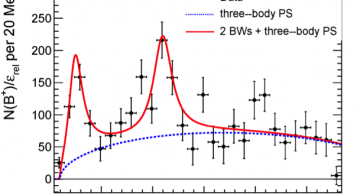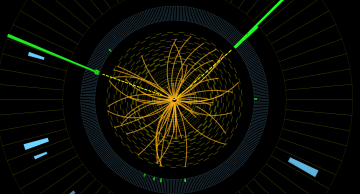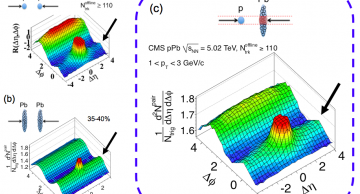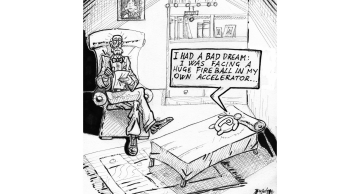Following the results presented at the electroweak session of the annual winter conference, Rencontres de Moriond, CMS has now presented many new results for this week’s quantum chromodynamics (QCD) session. The results include many searches for new…
News
|
achintya |
Physics
CMS is presenting a wide range of results for the annual winter conference, Rencontres de Moriond. The first week of Moriond — 3–8 March — is devoted primarily to electroweak (EW) studies. Among the CMS results are further studies of the recently…
|
achintya |
Physics
The new year brings a new type of collision at the LHC: the accelerator will smash protons and lead nuclei together, allowing CMS and the other LHC experiments to study the cold nuclear matter we expect these collisions to produce. Although we…
|
achintya |
Physics
In 2011, CMS presented early evidence that Upsilon (Υ) particles produced in lead-lead collisions “melt” as a consequence of interacting with the hot nuclear matter created in these heavy-ion interactions. CMS has since updated and extended this…
|
achintya |
Physics
In the vast particle landscape, there are, to borrow a phrase, known knowns (the Standard Model, for example), unknown unknowns (exotic extensions of the Standard Model and beyond), and those ever-interesting known unknowns. A recent CMS observation…
|
achintya |
Physics
At the Hadron Collider Physics (HCP) Symposium held in Kyoto, Japan on 12–16 November 2012, CMS presented many new results, including updates on the search for the Standard Model (SM) Higgs boson as well as Supersymmetry (SUSY). Several of these…
|
psilva |
Physics
Amongst all known elementary particles, the top quark is peculiar: weighing as much as a Tungsten atom, it completes the so-called 3rd generation of quarks and is the only quark whose properties can be directly measured. Owing to its mass, the top…
|
stoynev |
Physics
Recommendations for luminosity estimations for HCP are available on the main LUM POG page.
|
davidlw |
Physics
CMS has published its first paper on proton-lead (pPb) collisions, describing the observation of a phenomenon that was previously seen first in nucleus-nucleus collisions but also detected by CMS in proton-proton (pp) collisions. The effect is a…
|
pivarski |
Physics
All of the atoms in our bodies are made of electrons, protons and neutrons, and the protons and neutrons can be further broken down into quarks. Fundamentally, then, we are made of only two types of particles: electrons and quarks. But what do these…
|
achintya |
Physics
Our best understanding of the early Universe tells us that a dense medium, known as the quark-gluon plasma (QGP), existed in the first microseconds after the big bang. These early-Universe conditions can be mimicked in particle colliders by smashing…
|
lucas |
Physics
The Quark Matter 2012 conference, held in Washington DC from 13-18 August 2012, brings together experimental and theoretical experts in the area of heavy-ion physics. This week, the CMS collaboration is presenting many exciting new results using…











